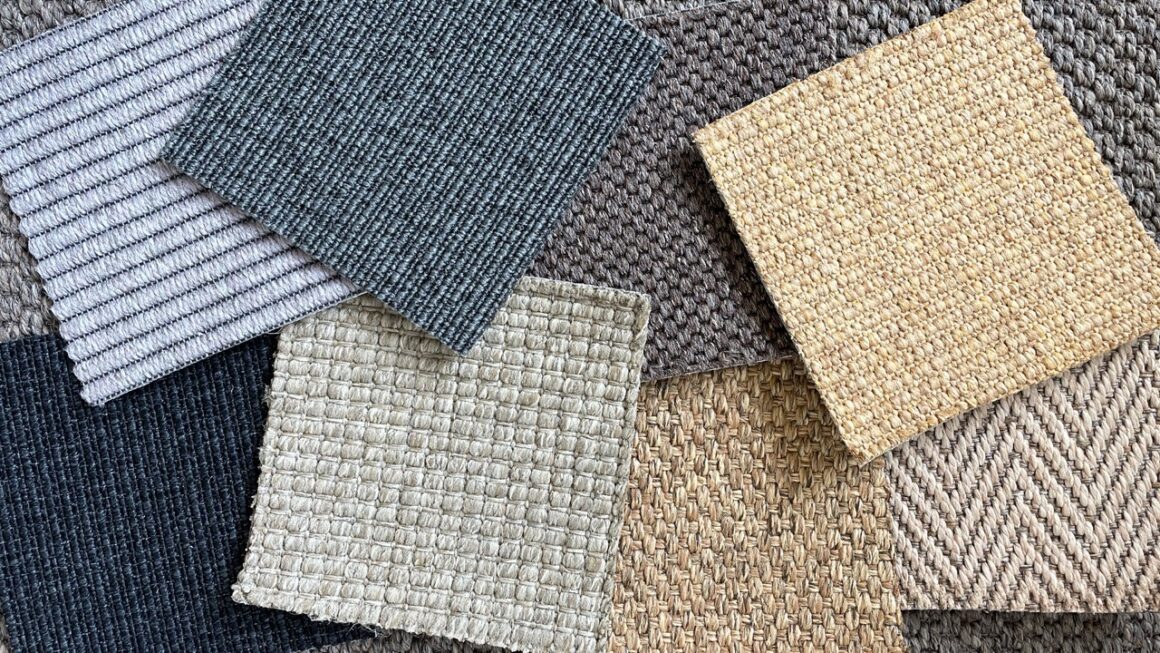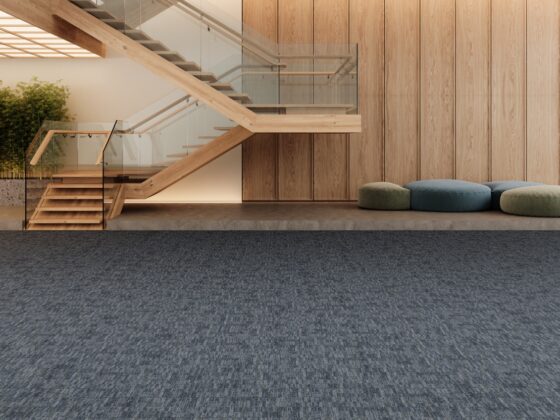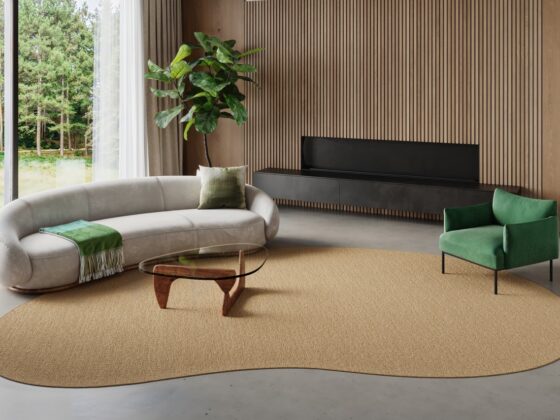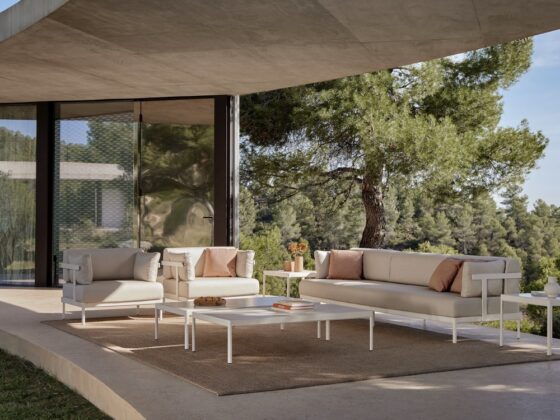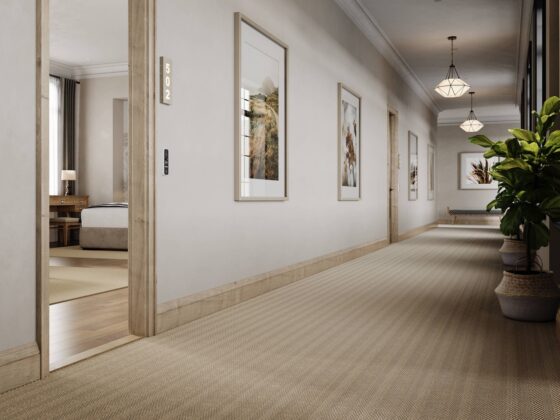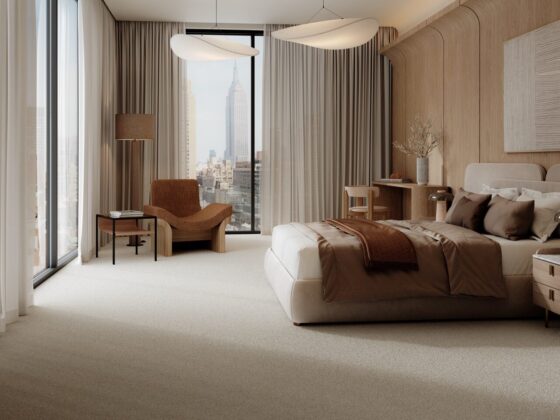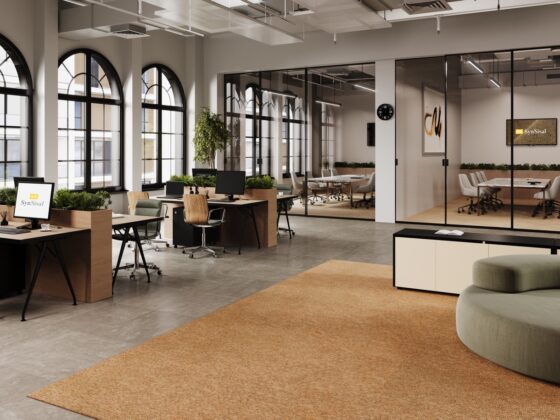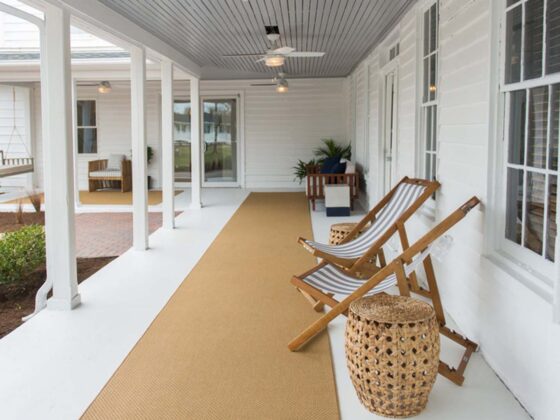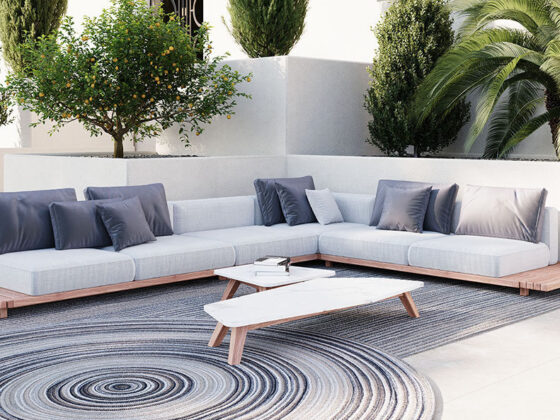Published May 2024 | Updated August 2025
Commercial and household project managers know that with any remodel or design project, specifying with the right material in the beginning saves time and headaches down the road. In this post, we’ll start with a quick comparison table and then move onto the pros and cons of synthetic carpet materials like nylon, polyester and polypropylene so you can make the best choice for your application.
Nylon vs. Polyester vs. Polypropylene Comparison Chart
Always check the specifications for the carpet or rug you are considering. Synthetic fibers are manufactured to meet different needs and end use applications—one nylon carpet might have UV-resistant yarns but only a residential use rating, while another may have both UV-resistant yarns and a contract grade rating.
The comparison table below primarily references high quality, contract grade versions of these fiber types and assumes the yarns are solution-dyed, UV-resistant, and have some level of stain-resistant treatment.
* = Good, ** = Great, *** = Excellent
$ = least expensive, $$ = more expensive, $$$ = most expensive
| NYLON | POLYESTER | POLYPROPYLENE | |
| Durability | *** | ** | ** |
| Resiliency | *** | * | ** |
| Ease of Cleaning | *** | *** | ** |
| Stain Resistance | ** | *** | *** |
| Soil Resistance | *** | ** | * |
| Anti-Static | ** | ** | *** |
| Colorfast | Yes | Yes | Yes |
| UV-Resistant | Yes | Yes | Yes |
| OK for Pets? | Yes | Yes | Yes |
| Outdoor Use? | No | Maybe | Yes |
| Anti-Microbial** | Yes | Yes | Yes |
| Eco-Friendly Option? | ECONYL® | PET | — |
| Cost | $$-$$$ | $-$$ | $-$$ |
| Range of Styles & Qualities | Yes | Yes | Yes |
| Use Application | Heavy Commercial, Hospitality, Residential | Commercial, Hospitality, Residential | Commercial, Hospitality, Residential |
From luxury hotels to high-traffic retail spaces, designers rely on our expertise to create stunning, high-performance interiors.
Explore our Commercial Projects for real-world case studies and design inspiration.
Common Materials for Synthetic Rugs
The majority of synthetic rugs and carpet are made from nylon, polyester, or polypropylene, three materials known for their durability, cleanability, and versatility. These same materials comprise the majority of commercially rated carpet in the market today.
Nylon
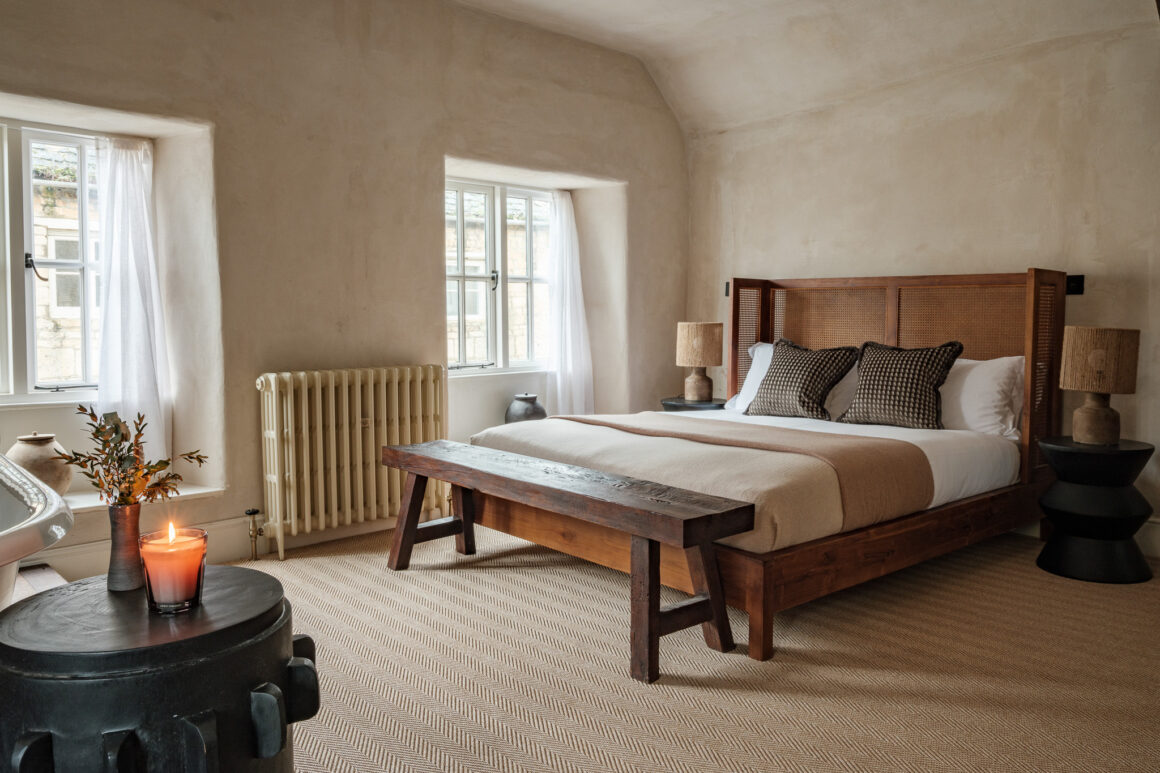
What is it?
Nylon is a synthetic fiber or yarn used in both residential and commercial carpets. It is strong, abrasion resistant, and resilient, and therefore most commercial carpet face fibers (the top pile) are nylon.
Also Known As
Polyamide, PA6 (polyamide 6), Nylon 6, Nylon 6,6 and ECONYL®.
- Nylon is a synthetic thermoplastic comprised of a polymer chain with recurring amide groups, hence “polyamide.”
- The numbers refer to the different carbon structures—nylon 6’s molecular structure has one monomer and 6,6 has two monomers. Although it is debated, there is little difference in performance between them.
- ECONYL® is a regenerated virgin-quality nylon product made from recovered and repurposed materials. The SynSisal® collection is crafted from ECONYL® yarns, which can be recycled and regenerated into nylon fiber for reuse. A cradle-to-cradle cycle with positive environmental impacts.
Pros
- Contract Grade: Nylon carpet is widely available with contract ratings for commercial settings.
- Cleanable: Unlike natural fibers, a nylon carpet is cleanable and resists stains.
- Durable & Resilient: Tough nylon fibers bounce back after compression.
- Abrasion Resistant: High quality nylon is tough and handles heavy foot traffic and regular cleaning.
- Colorfastness: Thanks to solution-dyed yarns, colors stay true.
- Hypoallergenic: Nylon is moisture and mildew resistant.
- Wide range of styles and qualities available.
Cons
- Cost, more expensive than a polyester and polypropylene carpet of comparable quality.
- Static electricity can build up unless treated with anti-static material.
- Not as soft as polyester, although technological advances are improving the feel of all synthetic carpet fibers.
- Not inherently stain-resistant unless treated; nylon is very absorbent but can be manufactured with a stain-resistant treatment.
Polyester
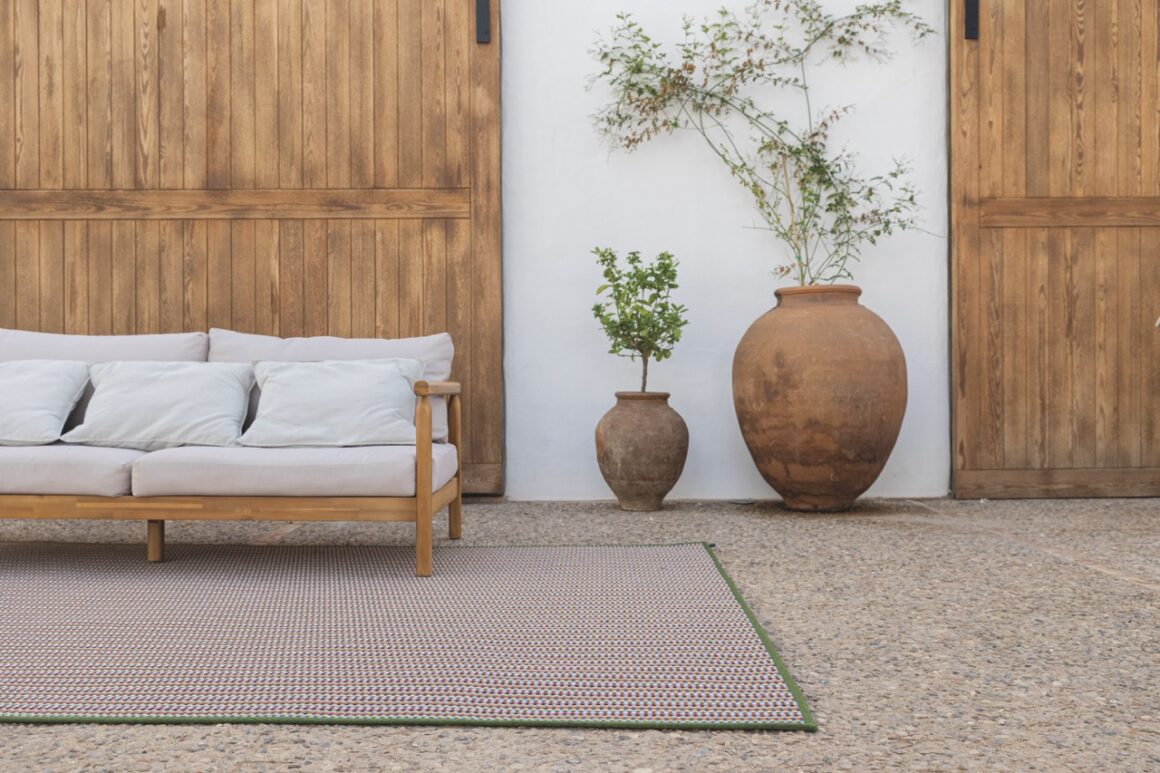
What is it?
A synthetic fiber family used in the manufacture of both residential and commercial carpets. Sometimes made from recycled materials, polyester fibers are soft and hold vibrant color well.
Also Known As
PET, rPET, poly silk
- PET, or polyethylene terephthalate, is a polyester fiber made from recycled plastics (e.g., water bottles).
- rPET is specifically designated when the PET fibers are 100% made from recycled plastics.
- Poly silk is a manmade polyester fiber with a soft texture and a silk-like sheen. It does not absorb moisture and is mold and mildew-resistant.
Pros
- Contract Grade: Polyester carpets are becoming increasingly more durable and appropriate for busy commercial settings.
- Colorfastness: Excellent color clarity and retention.
- Stain-resistance: Resists water soluble stains.
- Outdoor friendly: Some recycled PET polyesters are approved for outdoor use. Check specifications to be sure that the backing and/or the border (on a rug) is appropriate for outdoor-use.
- Feel: Softer touch than nylon and polypropylene, although technological advances are improving the feel of all synthetic carpet fibers.
- Affordable
- Wide range of styles and qualities available.
Cons
- Not all polyester carpets are rated for heavy commercial use.
- Less resilient and fibers will compress over time.
- Not as durable as nylon and may have to be replaced more frequently in busy areas.
Polypropylene
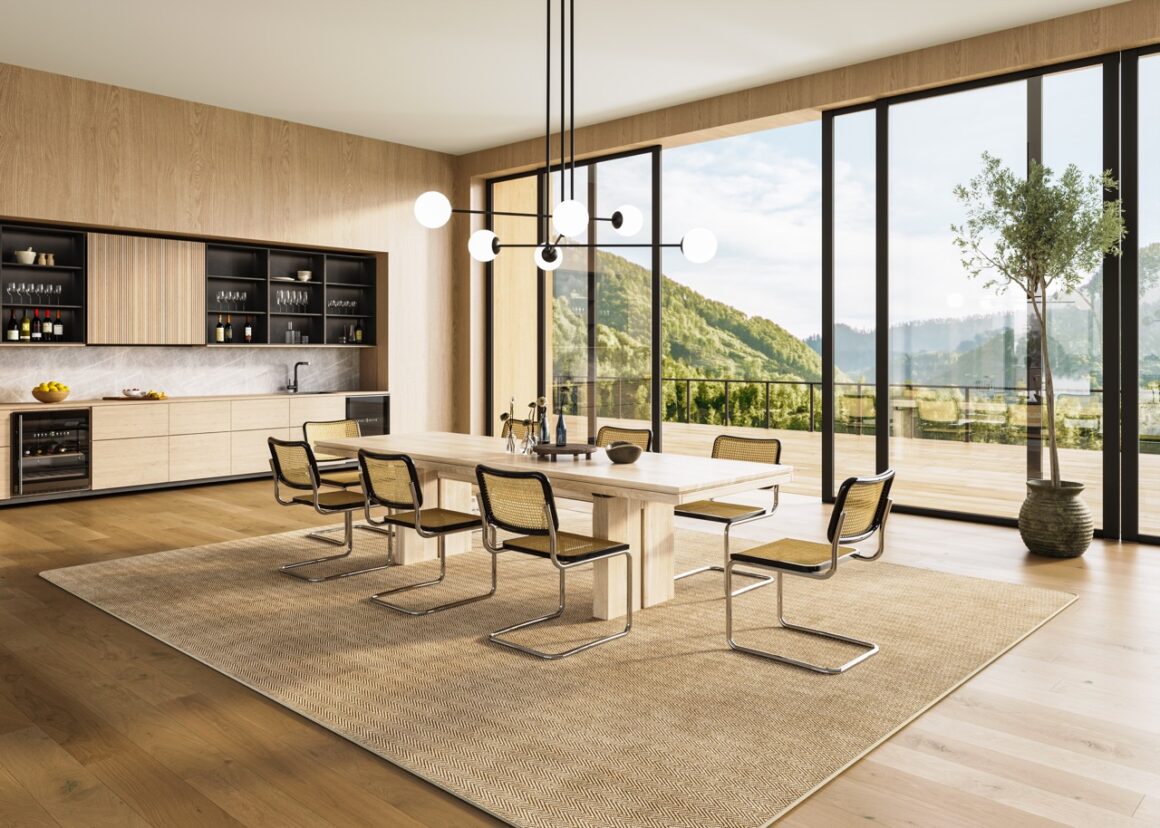
What is it?
A synthetic fiber used in the manufacture of both residential and commercial carpets. It is a long chain polymer composed of ethylene, propylene or other olefin units, and accounts for about a third of carpet face fibers in commercial carpeting
Also Known As
PP, Olefin
- PP is shorthand for polypropylene
- Olefin is the generic name for polypropylene
Pros
- Contract Grade: Not all polypropylene carpets are contract grade—it depends on the backing and the quality of the fibers. If the polypropylene carpet does not have a backing, then it is not contract grade. Unbacked polypropylene carpets are particularly great for outdoor residential settings. A backed polypropylene from the Terasa collection is commercially rated as well as outdoor friendly.
- UV-resistance: Yarns are colorfast and resist fading, even in sunlight.
- Outdoor friendly: Polypropylenes are great for outdoor use. Check specifications to be sure that the backing and/or the border (on a rug) is appropriate for outdoor-use.
- Anti-static: Generates low levels of static electricity.
- Favorably priced
- Hydrophobic: Polypropylene is impervious to moisture, making it mold, mildew, moisture and stain resistant.
- Solution-dyed yarns mean polypropylene is very stain-resistant and fade-resistant.
- Affordable
- Wide range of styles and qualities available.
Cons
- Not all polypropylene carpets are rated for commercial use.
- Not as durable as nylon and polyester. However, construction plays a major role in longevity—a tightly woven, flat weave polypropylene carpet like Brisbane is very durable compared to a loose textured polypropylene carpet.
- Oleophilic: not soil resistant and attracts oil-based dirt.
- Not as abrasion resistant as nylon.
Sustainable Synthetics for Carpets: What are ECONYL® and rPET?
The desire for cradle-to-cradle opportunities in the carpet industry is leading to exciting innovations and developments in the manufacture, production, and life cycle of flooring materials. Many manufacturers now regenerate post-consumer waste, like recycled plastic bottles, fishing nets, and even discarded carpets, into cutting edge fibers like ECONYL® or recycled PET yarns.
These materials offer a lower carbon footprint than virgin synthetics made from petroleum, making them a smart alternative for eco-conscious projects—especially in commercial interiors where durability and performance still matter.
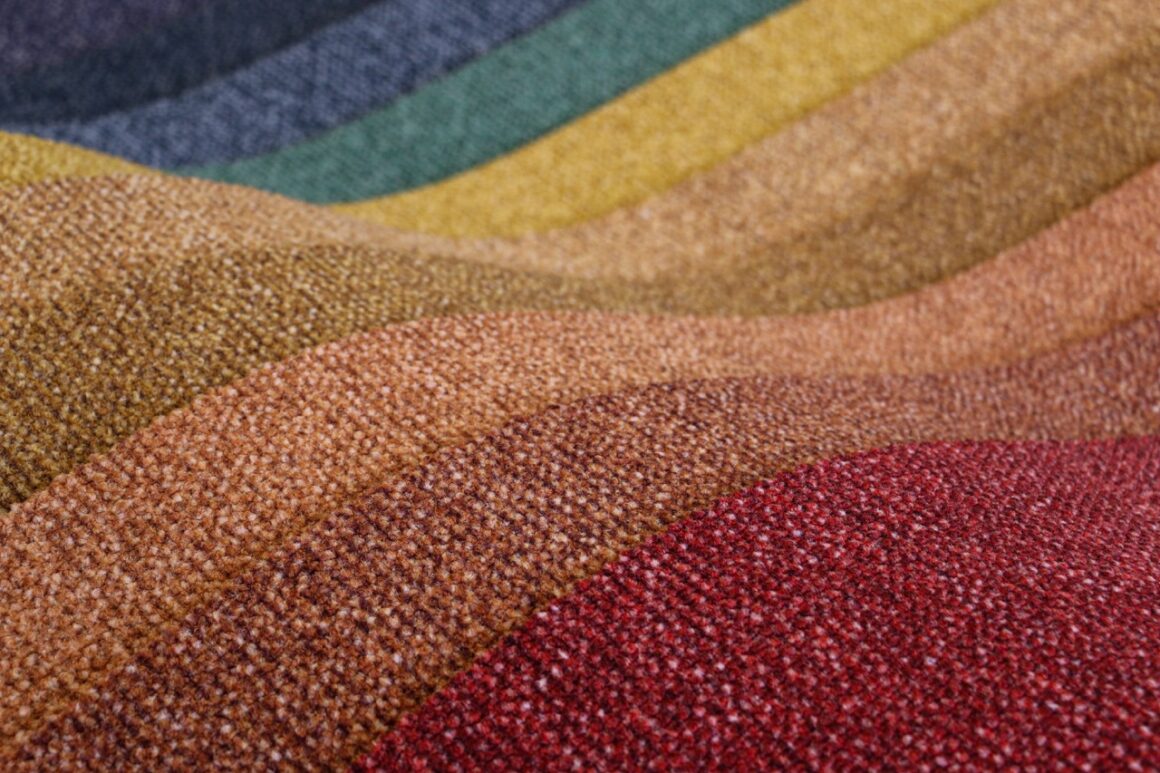
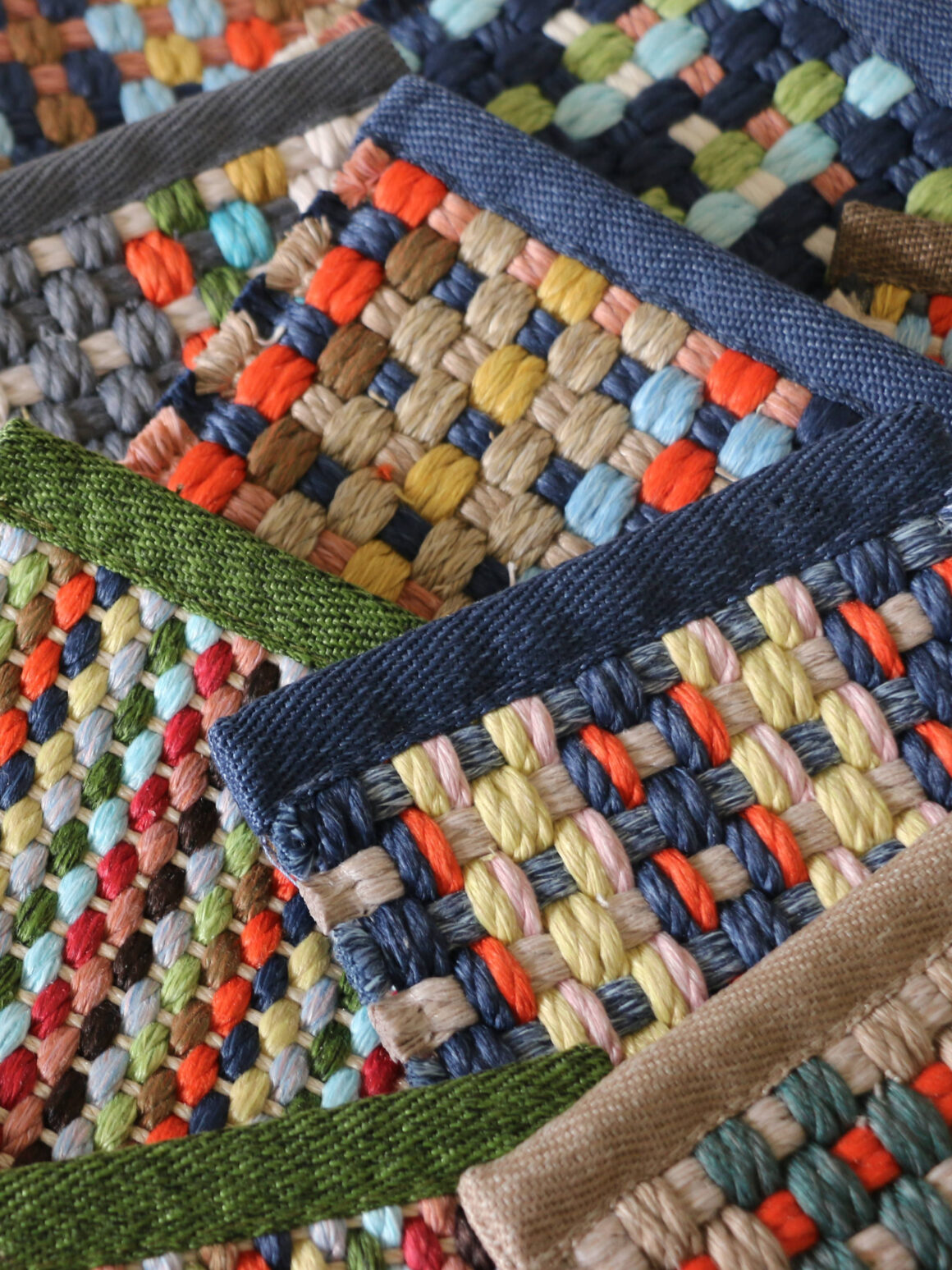
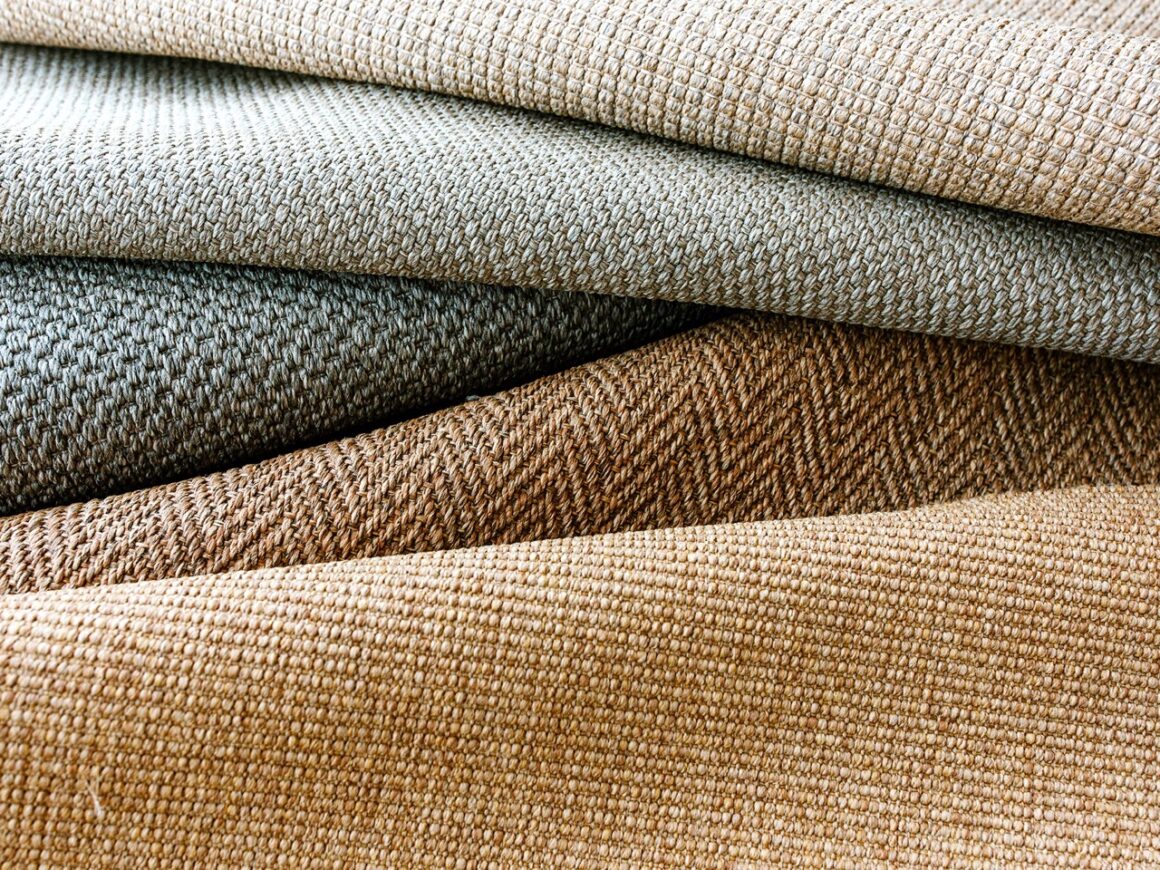
As with all new and emerging technologies, the product cost can be a barrier. But as the industry moves toward greener carpet production, costs will decrease while the benefits for all increase.
Prefer a natural material instead? Our All Natural Commercial page highlights contract-grade option like wool from the Pure Wool and Jacaranda collections, stain-resistant sisal rugs and Sisal Tiles.
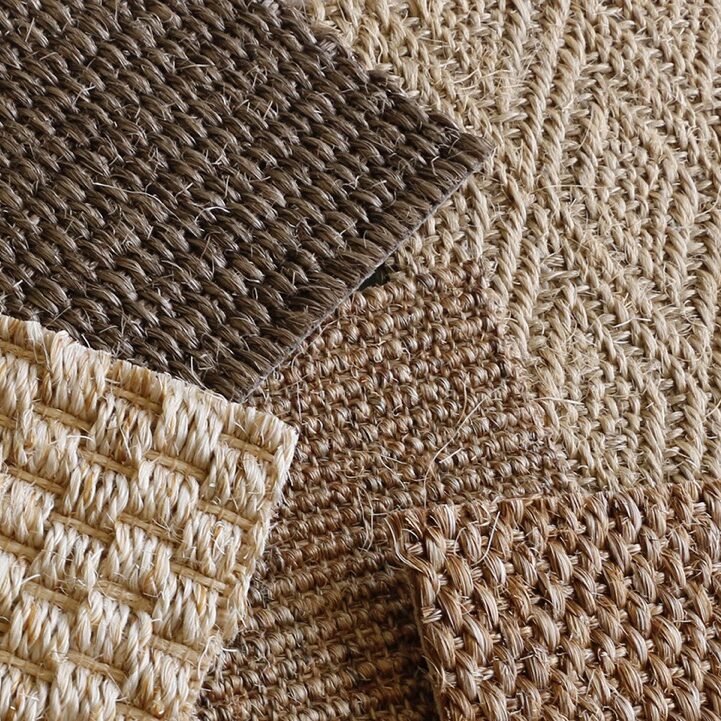
Interested in natural fibers like sisal, jute or seagrass?
Head over to What is the Difference between Sisal, Seagrass, Coir, Jute and Abaca? to learn about these fibers and where to use them.
Is flat weave better than cut pile for commercial spaces?
In many commercial environments, yes. Flat weave rugs offer a low-profile, tightly woven surface that performs well under heavy foot traffic. They’re easier to clean, don’t mat as easily, and meet ADA and safety standards more consistently than plush, high-pile carpets. That said, both flat weave and cut pile carpets can be viable—if the pile height, backing, and fiber composition suit the project’s needs.
Let’s go over a few carpet basics:
Construction & Pile
Tufted or woven, low pile or high pile—these are just a few examples of common rug or carpet attributes. The construction or final pile height of a carpet often dictates its use—a hand-loomed carpet will not hold up well in a busy, commercial space and a carpet with a plush, high pile is best for residential settings.
Tufted
Tufting is the fastest method of carpet production and the most common. A tufting machine is like a giant sewing machine, with hundreds of needles stitching or punching the pile yarn (or face yarn) through a primary backing. A tufted carpet can have a variety of finished pile styles, like loop, cut and loop, multilevel loop, or plush.
Woven
A woven carpet is made on a loom, either machine or manually operated, and does not have knots. Instead, the stability of the weave depends on the interlacing warp and weft yarns. The pile yarns or face yarns and backing yarns are woven simultaneously. A woven carpet can have loops, cut piles, or a flat weave.
Pile Height
High Pile vs. Low Pile
No matter the construction, all carpets have a pile height. A low or short pile carpet has very short fibers or tufted low level loops. High pile carpets have larger loops, multi-level loops, or cut fibers that are long for a dense cushion. Since pile or face yarns represent the majority of the material cost of carpet, be sure you are specifying the right height for your project. The higher the pile, the more difficult it can be to clean.
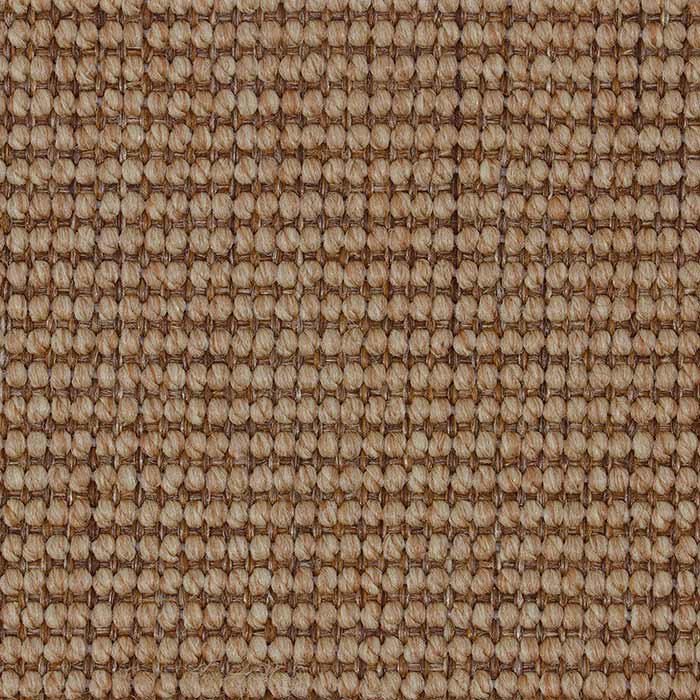
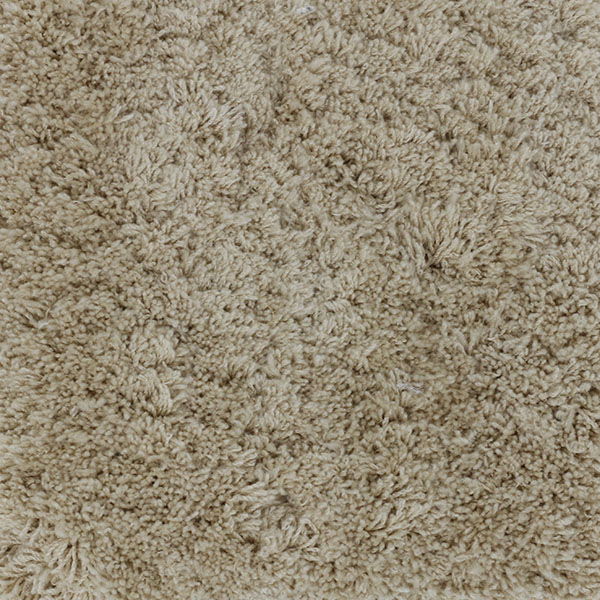
What is a flat weave rug or carpet?
A flat weave rug is a woven rug with the interlacing warp and weft yarns forming the dimensionality of the weave. The yarns are pulled tight and low, creating a flat surface. Flat weaves have a low pile height and do not have loops.
Some flat weave rugs do not have a backing. For example, many flat woven polypropylene rugs are not backed and are ideal for residential outdoor use. Natural flat weave rugs like sisal or seagrass have a latex or jute backing. Lastly, many synthetic flat weave rugs include a durable backing and a tight, flat surface, making them a great choice for heavy-use areas such as hotel rooms, corridors, office spaces, or busy family homes.
A Word About Carpet Padding
The under pad or underlayment for any wall-to-wall carpet installation or area rug makes a positive impact on comfort level, sound absorption, and the overall lifespan of your floor covering.
- For area rugs, a carpet pad stabilizes the rug in place while adding a cushioned layer. Keep in mind the thickness of the pad—the thicker it is, the more likely it creates a tripping hazard.
- For wall-to-wall installations, rely on the expertise of your professional carpet installer.
- When installing flat weave carpeting, the underlayment or carpet padding should be dense and not too cushy or thick which can compromise seams.
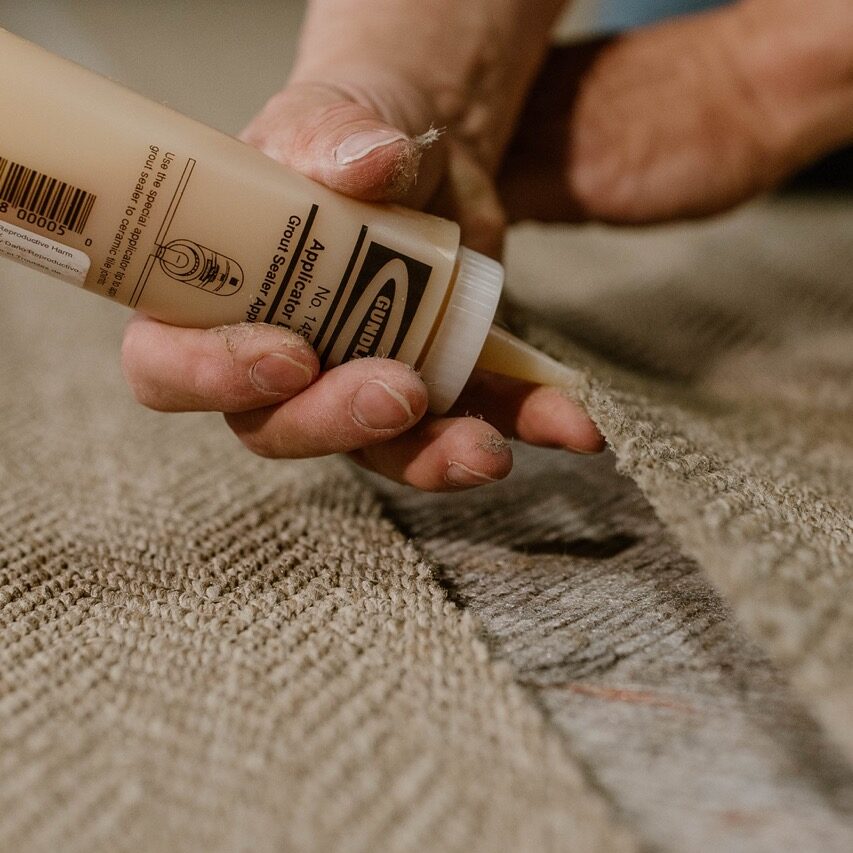
Installing a Flat Weave Carpet?
From planning the project to handling seams properly, we have all you need to know about flat weave carpet installation, including tips, tricks, and hands-on videos.
Final Words
In conclusion, synthetic fibers like nylon, polyester, and polypropylene are great options for contract settings or if you are looking for a cleanable, durable floor covering. Nylon reigns supreme in regards to overall performance: heavy contract ratings, high resiliency, cleanability, and longevity. But a polyester or polypropylene carpet carries many of the same credentials, like contract ratings, durability, and cleanability, potentially at a lower price point. And with the advent of regenerated yarns, a greener story is possible for all synthetic rugs.
FAQ
For inset applications, extra care is needed so edges don’t fray. Always seal open edges with a seam sealer and protect them with a transition or schluter strip. Without this protection, flat weave carpets may not perform well.
Check the technical specifications of the carpet. With proper backing, polypropylene and poly silk fibers work well outdoors. Unbacked polypropylenes, the Rols Collection or Terasa rugs are particularly great for residential outdoor settings.
Commercial classifications help you choose the right carpet for spaces like retail shops or hotel lobbies. Our Carpet Classifications Guide explains durability ratings, fire ratings, and the organizations that set these standards.
VOC (volatile organic compounds) refers to off-gassing from carpets. Virgin synthetics, made from petroleum, off-gas more than natural products. Regenerated fibers like ECONYL® and PET have lower VOCs. Find low VOC options here.
Yes—depending on your needs. Carpet tiles are versatile, budget friendly, and often easier to install than broadloom carpet. Learn more in our guide: Carpet vs. Carpet Tiles: Choosing the Right Flooring Option.
Protect your investment with routine care and maintenance. Regular vacuuming is important, but for more information on caring for your synthetic rug, check out our High Traffic Area Rug Guide for tips on treating stains and more.
engineered for possibilty
FLEXIBEL™ Modular Carpet
German-engineered for commercial spaces, FLEXIBEL™ offers tiles, planks and broadloom rolls in flexible formats and styles for efficient, low-VOC installation.



